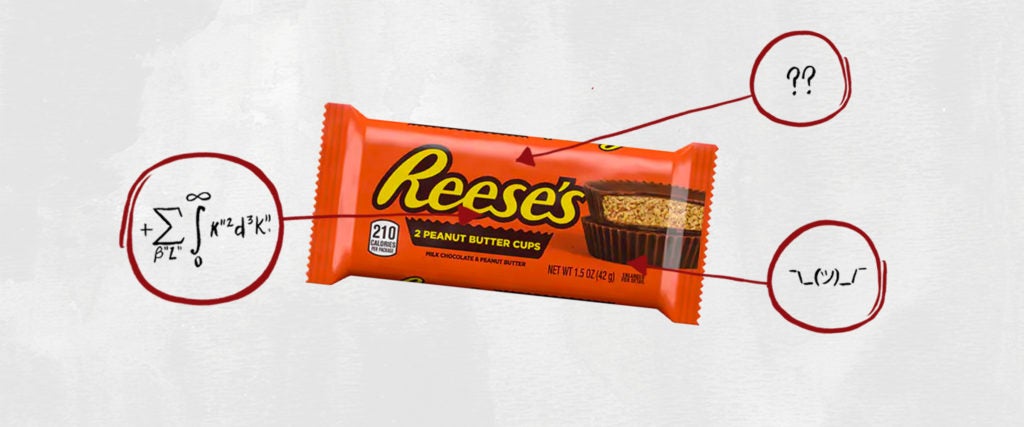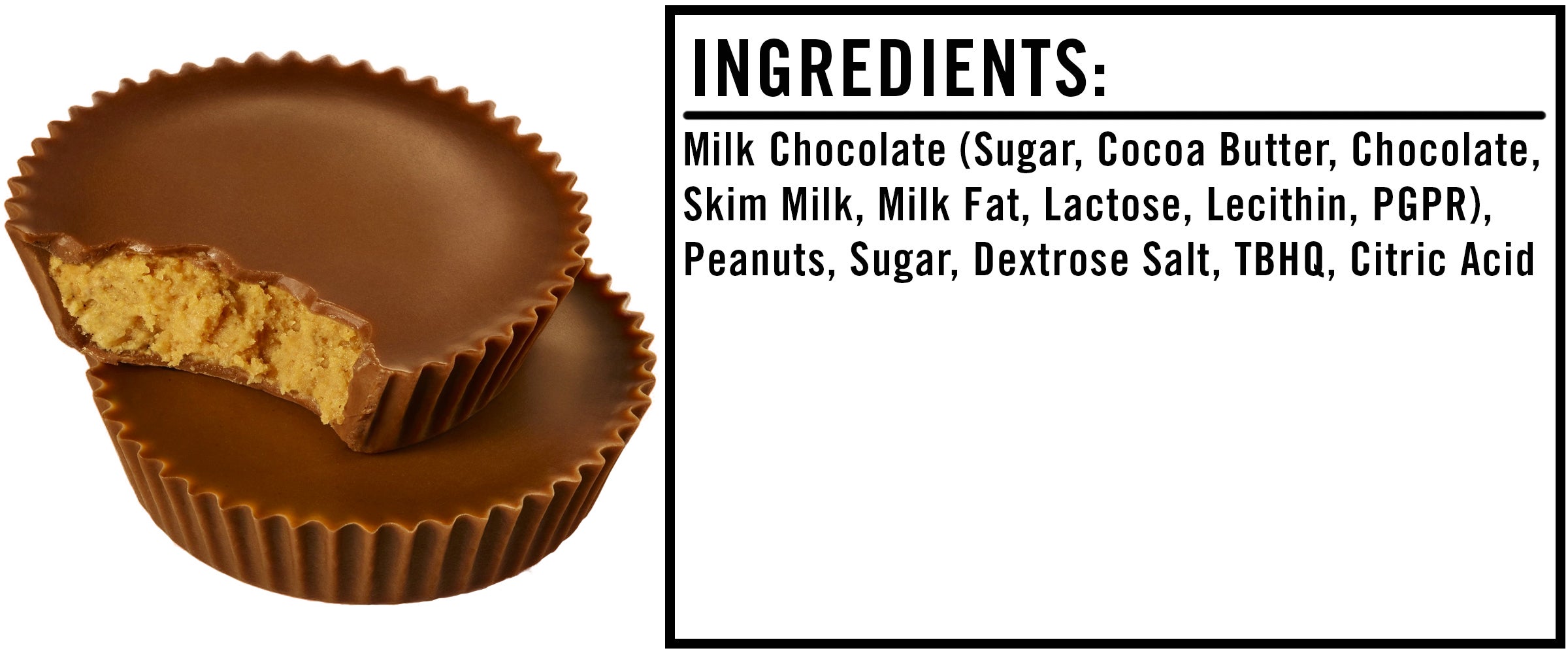We’re often told that you should never eat anything (or put anything on your body) if you don’t recognize everything on the ingredients list. But since most of us have no idea what xanthan gum or potassium benzoate are — or more importantly, what they’re doing to our bodies — we’re decoding the ingredients in the many things Americans put in (and on, or near) themselves.
This edition: Reese’s Peanut Butter Cups, which are made from seven (well, kinda) separate ingredients that we’ve broken down as they appear online.
The Reese’s Cups Ingredients
1) Milk Chocolate: By definition, milk chocolate is chocolate that contains cocoa, sugar and milk. But the milk chocolate in these Reese’s cups contains a few more ingredients, as listed below.
- Sugar: In total, two Reese’s cups contain 22 grams of sugar, equal to five and a half sugar cubes, which is quite a lot for only two mouthfuls. For reference, the American Heart Association recommends men consume no more than 36 grams and women consume no more than 25 grams of added sugar a day.
- Cocoa Butter: Fat extracted from cocoa beans.
- Chocolate: In its most basic form, chocolate is made by roasting and grinding cocoa beans.
- Skim Milk: Milk without the cream.
- Milk Fat: Milk fat is the fatty portion of milk, and is usually added to processed foods as a means of adding heartiness and oftentimes a sort of creamy texture.
- Lactose: The sugar found in dairy.
- Lecithin: Lecithin is a generic term used for fatty substances that come from animal and plant tissues. Whatever the source, it acts as an emulsifier, helping the numerous ingredients in this milk chocolate mix together.
- PGPR: PGPR, or polyglycerol polyricinoleate, consists of glycerol and fatty acids, which are typically derived from castor beans. Like lecithin, it acts as an emulsifier that reduces viscosity, improving the flow of the chocolate during production. It can also extend the shelf life and appears to be safe.
2) Peanuts: Real peanuts!
3) Sugar: More sugar.
4) Dextrose: Dextrose is a sugar derived from starches, like corn. Fun fact: Dextrose has an especially high glycemic index, meaning it quickly raises blood sugar levels, so it’s used in IV solutions to treat low blood sugar and dehydration. People with diabetes might also consume dextrose tablets to raise their blood sugar levels if they become dangerously low. Because of this blood-sugar-boosting effect, consuming dextrose also provides an almost immediate jolt of energy — and then an inevitable crash.
5) Salt: To enhance the flavor.
6) TBHQ: TBHQ, or tertiary butylhydroquinone, is a preservative that acts like an antioxidant, preventing rancidity and discoloration. Studies cited by the Centers for Science in the Public Interest found that TBHQ promotes the growth of tumors in rats, and the National Library of Medicine says that vision disturbances have been reported by humans after consuming the preservative. While the FDA only allows TBHQ to be added in small amounts, this is still an ingredient to be wary of.
7) Citric Acid: Citric acid naturally occurs in citrus fruits and is often added to foods to extend their shelf life.
The Takeaway
You already knew that Reese’s cups were going to be packed with sugar, and the presence of TBHQ is certainly a downer. However, going by Halloween candy standards, the peanuts in Reese’s at least provide some protein to help round out the sugar — five grams per two Reese’s cups, to be exact. It’s not much, but it’s better than nothing.


